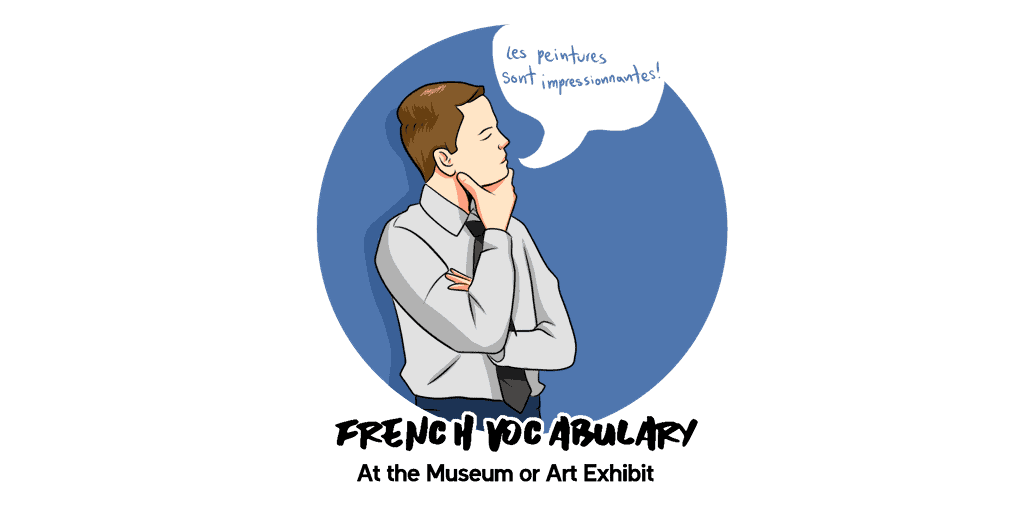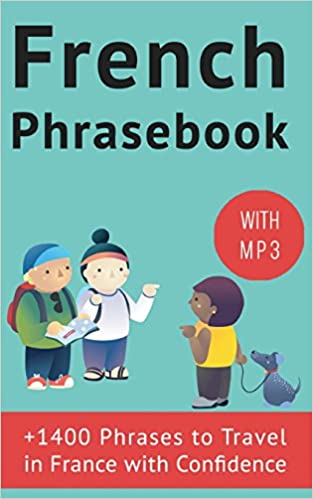So you're a fan of les arts? We've got the perfect French vocabulary for visiting an art museum or gallery.
Visit the world-class museums in France and use these phrases to sound like a local and get a new appreciation for art!

Art in France
Art is one of the defining aspects of the culture in France. While there are museums and galleries across the entire country, Paris is home to some of the most famous museums in the world.
Musée du Louvre is the most visited museum in the world, attracting more than 10 million visitors every year. It's an excellent destination for practicing your French vocabulary while viewing the most famous masterpieces, or chef-d' œuvre, in the world such as the Mona Lisa, David, and the Venus de Milo.
It can take several days exploring the massive collections housed at the Louvre. If time permits, other museums worth checking out are the Musée National d'Art Moderne and Musée Picasso.
Don't worry if you don't see everything here as there are 130 museums in the capital alone.
You'll come across lots of art galleries, or galerie d'art, in Paris featuring iconic artists, or artiste.
Take along some of these French vocabulary words to impress everyone on your art gallery crawl. You'll learn everything from entering the museum to describing your favorite art in French.
At the reception
You must first purchase tickets to enter most museums. When you reach the reception, you'll say "combien coûte un billet" when asking for the ticket price for entry.
To make sure that the museum is worthwhile to visit today or another day, you should also ask: "Quand fermez-vous," or "when do you close," or if you're planning to return another day, "Quand ouvrez-vous," for "when do you open."
*Tip – Many museums in Paris (and around the world) have free museum days for entrée gratuite, or free entry. Be sure to take a look at the museum hours or check online. The first Sunday of every month is free entrance for everyone to the Louvre, Musée Picasso, or Musée d'Orsay.
The reception is also a great starting point before you head into any museum or gallery. They will point out the must-see expositions, or exhibitions. In case you're still unsure, you can also grab a plan du musée (museum map) to find which exhibition you may enjoy checking out.
One of the popular trends in museums is to use l'audioguide, a self-directed tour of the galerie or musée with a personal audio guide in your pocket telling you all about each œuvre d'art, or work of art.
See if they have the audio guide available in French so you can also get some listening practice while enjoying the museum. You may even hear some of the upcoming vocabularies when describing the art.
Types of Art
L'art comes in many different styles, forms, mediums – art lovers can go on for days telling you about all of the different kinds of art, but it's best we start with the basics that you'll most likely see in every museum.
Some of the exhibitions that you see in a variety of museums may be designated for:
Art also comes in countless numbers of forms, works that make up the objets exposés, or exhibit. Walking through a gallery or museum, take your time to admire une peinture (painting), une aquarelle (watercolor painting), or la peinture à l'huile(oil painting).
The museums in Paris exhibit world-class sculptures, or la sculpture, each with vast detail and history behind each piece.
Describing art
describing what you think of a particular artwork or sculpture. The French language has a wide range of adjectives to use to describe a work of art.
Some of your descriptions may be literal such as talking about physical features of the art, while others may have more abstract feelings towards a piece and describe how it makes them feel.
Standing in a crowd of tourists around the Mona Lisa in the Louvre, you'll undoubtedly hear exclamations of "Belle!", or "Magnifique!" Viewing some of the original paintings of Picasso in the Musée Picasso, you'll hear phrases including "très intéressante," or "impressionnante."
Keep in mind that the verbs you'll use while describing art are: est vs. sont.
If you're describing one particular work of art, you'll say, "Une œuvre d'art est belle," which translates to "a work of art is beautiful."
If you're talking about several pieces, the verb "sont" is used, as in "les peintures sont impressionnantes," or the paintings are impressive.
Before you leave, don't forget to pick up a few gifts at the boutique de souvenirs, or gift shop, on your way out. In case you've worked up an appetite practicing French in the museum, treat yourself to a delicious baguette at the museum café.
Spending a day at the museum is a great way to spend time on vacation, especially in a city like Paris, with so many museums and gallery options.
Check out a full list of French vocabulary to use in a museum or gallery below.
French Museum Vocabulary
| Art | L’art |
| Visit a museum | Visite un musée |
| Art gallery | Galerie d’art |
| Art exhibition | Une exposition d’art |
| Artist | Artiste |
| Work of art | Une œuvre d’art |
| Masterpiece | Chef-d’œuvre |
| How much does a ticket cost? | Combien coûte un billet |
| When do you close? | Quand fermez-vous |
| When do you open? | Quand ouvrez-vous |
| Free entrance | Entrée gratuite |
| Is there a café? | Y a-t-il un café? |
| Museum map | Plan du musée |
| Audio guide | L’audioguide |
| Modern art | Art moderne |
| Oil painting | La peinture à l’huile |
| Watercolor painting | Une aquarelle |
| Avant-Garde | Avant-Garde |
| Painting | Une peinture/un tableau |
| Sculpture | La sculpture |
| Beautiful | Belle |
| Very interesting | Très intéressante |
| Magnificent | Magnifique |
| Gift shop | Boutique de souvenirs |
Spending a day at the museum is a great way to spend time on vacation, especially in a city like Paris, with so many museums and gallery options. Did you find art museum in French? Hope you enjoyed this vocabulary lesson!


